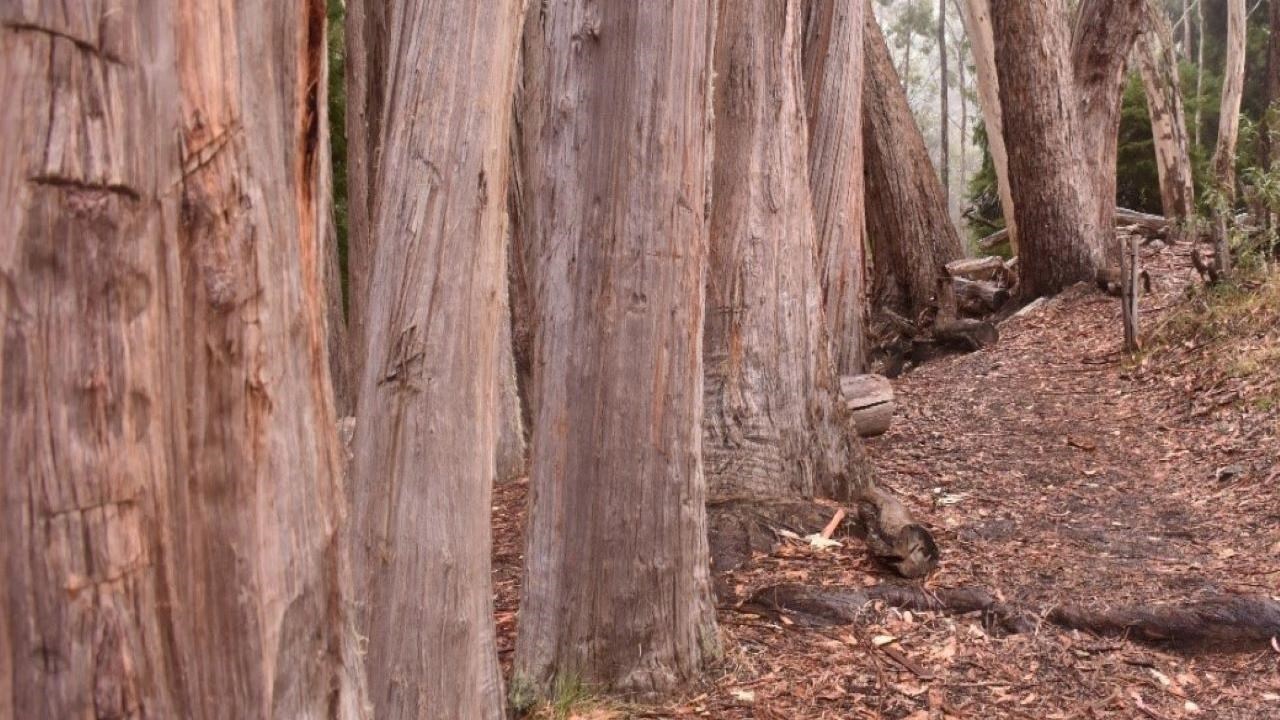Last updated: February 13, 2023
Place
Eucalyptus Trees

NPS Photo
Cellular Signal
Since eucalyptus trees are the fastest and tallest growing trees in the world, Ralph Hosmer was curious how they would grow here. These trees are native to Australia, where they are used as firewood, timber, and medicine.
In Hawaiʻi, eucalyptus were initially planted as a fuel source, wind break, and for erosion control. Varieties in Hosmer Grove include black peppermint, blue gum, and messmate eucalyptus.
A normal functioning watershed has a forest with three canopies, a lower, middle, and top story. With all three canopies the forest can better trap water, by slowing raindrops, catching mist from the air on leaves, which drips into the soil and recharges the water table below. But here, when looking up and down on the ground, you’ll notice there is only one story in this forest- the upper level story of trees. The ground is mostly devoid of understory plants. The leaves and roots of eucalyptus trees inhibit other plants to grow under them due to naturally occuring chemicals. Having no middle or lower canopies causes soil to easily wash downslope through streams and rivers into the ocean, which can eventually harm coastal reefs by over-sedimentation.
Eucalyptus trees can be seen in old groves, roadsides, and windbreaks in Hawaiʻi and have been introduced on each of the islands- some species have become invasive. Eucalyptus may have negative impacts, but they also provide food and foraging habitat for many native forest birds.
As you walk to the next stop put on your detective hat and find a fresh green eucalyptus leaf on the ground, crush it in your hands to smell the pungent oils of the many different eucalyptus species planted here.
